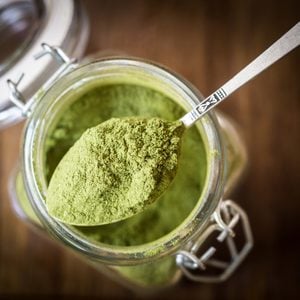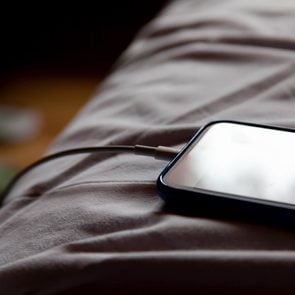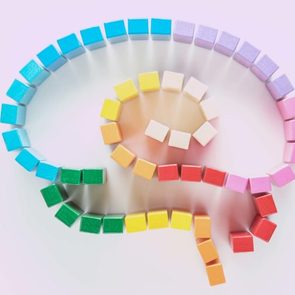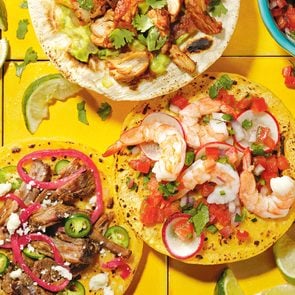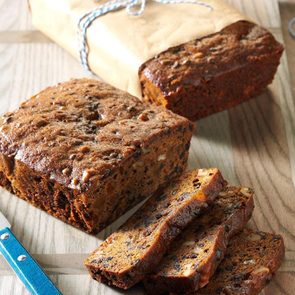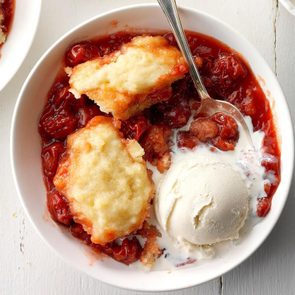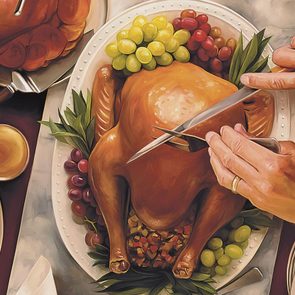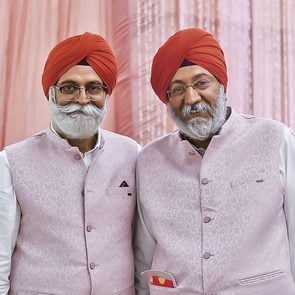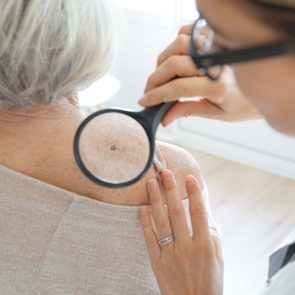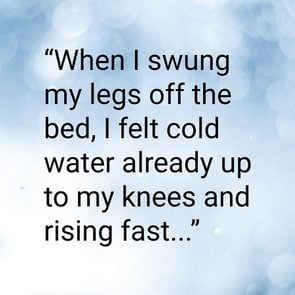One morning last winter, Lynn Smith was doing a series of gentle yoga stretches in her living room, trying to loosen up a stiff lower back. When the 56-year-old sat up, she felt a bit strange. “I started to feel dizzy in a way I had not felt before,” she says.
In bed that night, Smith had the sensation that the room was spinning. She would later learn that she was experiencing her first episode of vertigo.
Vertigo is often described as a sensation of motion, but it’s more complex than a dizzy spell. Ringing in the ears, loss of balance, double vision and trouble swallowing are other common sensations, depending on what is causing the vertigo. Each episode can last anywhere from a few minutes to a few days.
Although it can affect people of all ages, vertigo is most common in mid-life and beyond. It’s also more prevalent in women, though experts don’t fully understand why, says Dr. Terry Fife, a neurologist at the Barrow Neurological Institute in Phoenix, Arizona, who specializes in balance disorders. Nearly 35 percent of Canadian adults will experience vertigo at least once in their lifetime.
It’s important to understand that vertigo is not a disease in itself: It’s a symptom. There are many reasons why someone may have vertigo, but it generally falls into one of two types: peripheral vertigo and central vertigo.
With peripheral vertigo, the most common cause is a condition called benign paroxysmal positional vertigo, or BPPV. (Less common causes are head injury or Ménière’s disease, a rare inner-ear condition.) BPPV develops when canaliths (tiny crystal-like calcium particles) that naturally occur inside the ear become loose and move deeper into the inner-ear canals. As they roll around inside, they can disrupt the transmission of information to the brain about balance. BPPV-caused vertigo can then flare up when someone leans back to look up into a high kitchen cupboard, bends over to tie their shoe—or, as Smith discovered, folds over in a yoga pose.
Central vertigo is less common and occurs in people who are experiencing a problem with the central nervous system, such as vestibular migraines (a type of migraine defined by extreme dizziness) or stroke.
With so many different causes of vertigo, the treatment options are equally diverse. “That’s why getting the diagnosis right is especially important,” says Fife. A primary-care physician may refer a patient to an ear, nose, and throat specialist (ENT), or they may suggest a neurologist or a cardiologist.
BPPV will often resolve itself in a few weeks or months, but rather than wait, patients can try exercises to wiggle the canaliths, or ear crystals, back out of the inner ear. The Epley manoeuvre, which Smith had success with, is the most well-known. According to a 2023 study published in the journal Medicine, it improved vertigo in 98 percent of patients. Medications, like those prescribed for motion sickness, can help quell symptoms when they strike.
Smith’s neurologist also recommended she avoid alcohol, sugar and caffeine, as they could potentially trigger episodes of vertigo. Stress and inadequate sleep are other possible triggers.
“Feeling the room spin was terrifying,” says Smith. As she shared her experience with others, she was surprised at how many people said they too had experienced vertigo. “This is not some obscure medical condition,” she says. “It’s more common than you think.”
Next, read about how to deal with motion sickness.

Readers should consult their physician or primary health care provider before beginning any diet or nutrition plan.
Embarking on a diet tailored to address Candida overgrowth involves strategic eating to support the body’s natural balance and alleviate symptoms associated with this fungal condition. Candida cleanse diets typically focus on eliminating foods that may promote yeast growth while incorporating those that aid in rebalancing gut flora and reducing inflammation. By emphasizing nutrient-rich, anti-inflammatory foods and avoiding sugars and processed items, these dietary approaches aim to create an environment in which it is difficult for Candida to thrive. An effective Candida cleanse diet, complemented by lifestyle adjustments, seeks to restore harmony to the body’s microbiome and alleviate symptoms caused by Candida imbalances. At CanXida, we recommend a three-stage diet plan that involves ridding the body of foods that promote Candida growth and starve the bad guys.
Implementing a gradual transition or warm-up period before fully starting a restrictive diet can benefit many individuals seeking dietary changes. At CanXida, we recommend a two-week warm-up phase, which allows for a more manageable adjustment by gradually reducing the intake of foods considered detrimental while incorporating more nourishing options. During this initial period, the focus is on the reduction of processed or sugary foods and increasing the intake of fresh, nutrient-dense choices. This gradual approach helps individuals acclimate to the idea of dietary changes and allows the body to adapt more smoothly, potentially reducing the shock of sudden restrictions. By easing into healthier eating habits, individuals may find it easier to embrace the more structured and stricter aspects of their intended diet while still nurturing their bodies with better food choices.

Stage 1: The MEVY Diet
We recommend starting with the MEVY diet. MEVY, an acronym for Meat, Eggs, Vegetables, and Yogurt, represents a dietary approach focused on consuming specific food groups while avoiding certain others, primarily designed to address Candida overgrowth. During the next 2-4 weeks of our diet plan, individuals typically adhere to a more restricted regimen, emphasizing the consumption of lean proteins from sources like poultry, fish, and eggs. Vegetables, particularly non-starchy varieties such as leafy greens and broccoli, are pivotal in providing essential nutrients while keeping carbohydrate intake low to inhibit yeast growth. Plain and unsweetened yogurt containing probiotics is beneficial for gut health, restoring the balance of beneficial bacteria. Fermented foods (ex. kimchi and sauerkraut) are also helpful for this purpose. This phase involves further reducing or eliminating refined sugars, processed foods, grains, and high-carbohydrate options to create an environment less conducive to Candida proliferation, promoting a healthier gut microbiome. But, let’s be honest: this is not the most fun diet. Elimination diets never are. But neither is Candida. We choose our hard, right? It pays to do the work upfront.
If you have moderate-severe Candida symptoms, have had Candida for several years, consume alcohol regularly, have a history of antibiotic usage, have taken oral contraceptives or other prescription drugs, or have leaky gut syndrome, please continue to stage 2. If none of these apply to you, you can move to stage 3. However, the majority of people will benefit from implementing Stage 2.

Stage 2: The Low-Allergy Diet
In Stage 2, we recommend a low-allergy or hypoallergenic diet. This post-MEVY regimen focuses on diminishing potential allergens that might trigger immune reactions, exacerbating symptoms in individuals with Candida-related concerns, underlying food sensitivities, parasitic infections, or leaky gut syndrome. It adopts several vital principles, including eliminating or severely restricting common allergenic foods such as gluten-containing grains, dairy products (considering alternatives like sheep or goat’s milk), soy, nuts, shellfish, and seeds. Additionally, food rotation becomes essential, aiming to prevent the development of new sensitivities by varying dietary choices and minimizing prolonged exposure to particular allergens. The diet emphasizes whole, unprocessed foods like non-starchy vegetables, lean proteins, gluten-free grains (e.g., rice, quinoa), and less allergenic fruits.
By minimizing exposure to known allergens and potential irritants, the low-allergy diet intends to alleviate symptoms, support gut lining healing, and enhance overall well-being, especially for individuals who might have developed sensitivities due to Candida-related issues.

Knowing When to Progress
Transitioning from Stage 2 to Stage 3 typically occurs once significant progress and improvement are observed in managing Candida overgrowth and related symptoms. Stage 2 focuses on eliminating certain foods, implementing supplements, and following lifestyle modifications to reduce Candida levels and alleviate symptoms. Advancing to Stage 3 generally happens when individuals experience a notable reduction in symptoms, such as decreased digestive issues, improved energy levels, reduced inflammation, and better overall well-being. This progression signifies that the body is responding positively to the dietary and lifestyle changes, indicating readiness to incorporate a broader range of foods and further adaptations to support long-term gut health and sustained Candida management. However, the exact timing of transitioning from Stage 2 to Stage 3 may vary based on individual responses, and it is recommended to progress by exercising caution under the guidance of a healthcare professional.

Stage 3: The Reintroduction Phase
When an individual is ready to move to Stage 3, we recommend systematically reintroducing previously eliminated allergy foods post the MEVY and low-allergy diet. A cautious step-by-step process is recommended to identify and manage potential food sensitivities or allergies. This systematic approach aids individuals in understanding their body’s reactions to specific foods and customizing their diets to support overall health and well-being, which is essential for transitioning back to a regular diet.
Starting with small portions of one previously eliminated food item at a time allows for an accurate assessment of its effects. Observing any changes or adverse reactions post-consumption, such as digestive discomfort, skin reactions, headaches, or fatigue, within hours or days is crucial. Allowing a waiting period of a few days before reintroducing another food helps distinguish reactions between different foods and prevents confusion. Food diaries are beneficial to track reintroduced foods, portion sizes, and observed symptoms facilitating the identification of patterns and pinpointing specific triggers. Gradually reintroducing various foods, especially common allergens restricted during previous diet phases like dairy, sugar, alcohol, and gluten, while meticulously monitoring reactions, assists in stabilizing the gut and achieving a return to normal.
Seeking guidance from healthcare professionals or qualified nutritionists is advisable. Discussing the reintroduction plan, observations, and interpreting responses can lead to further personalized recommendations based on individual reactions, aiding in crafting a diet conducive to optimal health and wellness.
For many individuals dealing with Candida-related concerns, the approach to cleansing varies. Some opt for an annual comprehensive Candida cleanse, a more intensive regimen to thoroughly address and reset the body’s balance against Candida overgrowth. This comprehensive cleanse typically involves strict dietary modifications, supplements, lifestyle adjustments, and a structured plan to combat Candida. Conversely, others prefer a more frequent approach, opting for smaller-scale cleanses, possibly twice a year. These shorter, intermittent cleanses may involve a modified diet, targeted supplements, and lifestyle alterations to manage Candida levels, providing periodic support to the body’s natural defense mechanisms against Candida-related issues. In deciding which is best, individuals must listen to their bodies and tailor these diet recommendations to what is needed personally.

Holistic Well-Being
In addition to our three-part diet, we recommend a holistic approach that extends beyond dietary changes. Prioritizing adequate sleep, stress management, and proper hydration play vital roles in supporting the body’s ability to combat Candida-related issues. Ensuring a restful night’s sleep of at least 8 hours allows the body to rest and recuperate, enhancing immune function and promoting overall health, which is crucial in reducing susceptibility to Candida overgrowth. Stress management techniques, including meditation, yoga, or relaxation exercises, aid in lowering stress hormone levels, which may impact the immune system and potentially contribute to Candida imbalances. Moreover, maintaining adequate hydration by drinking plenty of water supports detoxification processes, helps flush toxins from the body, and fosters a healthier internal environment that may discourage Candida growth. Incorporating these lifestyle practices alongside dietary adjustments forms a comprehensive strategy for managing Candida’s overgrowth and promoting better overall well-being.
In conjunction with dietary modifications, integrating CanXida supplements Remove and Restore is the finishing touch in managing Candida-related concerns. These supplements, formulated by experts, are designed to complement dietary changes and lifestyle adjustments. Our supplements include a blend of ingredients targeting Candida overgrowth and supporting gut health, contributing to a more comprehensive approach to managing imbalances. When combined with a tailored diet and healthy habits, these supplements act as a valuable aid, providing additional support to help rebalance the gut microbiome, promote a more conducive environment for overall wellness, and prevent future Candida infections.
Embarking on a Candida cleanse and diet regimen requires commitment and a holistic approach encompassing lifestyle changes, dietary modifications, and supplements like CanXida Remove/Restore. The journey might present challenges and setbacks, but your persistence is key. Remember, it’s not just about treating symptoms but addressing the root cause. With dedication and a positive mindset, trust your ability to embrace a healthier lifestyle. Seek support, stay resilient, and celebrate every step forward. You’ve embarked on a transformative journey towards better health – keep moving forward, one step at a time.
For more information about candida overgrowth please visit our website CanXida.com
Reader’s Digest does not control or guarantee the accuracy, completeness or efficacy of information contained in any advertisement or sponsorship.
The storm seemed to come out of the blue. In the small cottage-country village of Cloyne, in eastern Ontario, residents started that sunny Saturday—May 21, 2022—in a festive mood, gathering outside the community hall for a trunk sale, barbecue and live music.
But by early afternoon, violent winds began to pick up as heavy rain fell. Some partygoers left and others scrambled into the town hall as a derecho—a fast-moving thunderstorm that causes widespread wind damage—ripped through town.
Late that morning, a series of emergency mobile smartphone alerts had been issued by Environment and Climate Change Canada, warning of a wall of wind and rain barrelling toward eastern Ontario from the southwest. But the shrill alarm tone and emergency text messages sent from Alert Ready, Canada’s emergency alert system, hadn’t reached many at the Cloyne gathering. While infrastructure upgrades have been underway since 2021, the most consistent access in the area comes from a 3G (third-generation) cellular network. “We didn’t get the message,” says township councillor Ken Hook.
No signal?
Like much of our daily life, Canada’s Alert Ready system operates on the assumption that Canadians have good cellular service—and these days, that means something better than 3G. To receive Alert Ready messages on your mobile phone (alerts are also broadcast over radio and television), you must have access to at least a 4G/LTE network (the current standard for data transmission on most smartphones) and have a cellphone that is compatible with that network—typically one that’s no more than six to nine years old.
While it’s easy enough (though not so cheap) to upgrade to a newer cellphone, your network access depends on where you live, with rural areas more likely to rely on 3G alone or a patchwork of 3G and 4G/LTE networks.
Now, that connection is at a crossroads: Over the next few years, Canada’s major telecommunications providers—Bell, Rogers and Telus—are expected to “sunset” the 20-year-old 3G infrastructure to save money and free up resources for newer, faster 5G networks. That means older cellphones will no longer work, and some remote communities could become cellular dead zones, even if they previously had service.
For Cloyne and other small communities that still have unreliable network connections—including Brooklyn, N.S., where Alert Ready messages warning of a flash flood failed to reach many residents in July 2023—being left off the emergency-alert list is just a taste of what could happen if cellular networks aren’t upgraded.
Stranded at home
It’s not just your cellphone connection that’s at risk. The shutdown could also affect any Canadian who has a home-security alarm, medical-alert device, vehicle SOS button or other device that still transmits data over 3G. Unless people upgrade their devices to newer models, they could suddenly stop working, leaving seniors, homeowners and drivers unable to contact loved ones or call for help in an emergency.
Once heralded as cutting-edge, 3G ushered in the smartphone revolution when Rogers and Apple launched the iPhone 3G in Canada in 2008, allowing users to access the internet on their mobile phones. Now, like its 1G and 2G predecessors, 3G is headed for the technology dustbin.
In the U.S., major American service providers T-Mobile, AT&T and Verizon finished “sunsetting” the last of their 3G networks at the end of 2022. Experts say Canada will be following suit. And while we don’t know exactly when, it’s essential that we get ready.

Our great digital divide
With its vast geography and unevenly distributed population, Canada’s “digital divide” is nothing new. While every province has at least 99.9 percent coverage for urban residents, that’s not the case for rural residents. And First Nations reserves have the lowest levels of 4G/LTE coverage, at less than 88 percent.
As of 2021, 46,000 Canadian households relied solely on 3G networks, while 76,000 had no connection at all, according to the United Nations Economic Commission for Europe. While telecommunications providers are building new towers, they’re more likely to focus on major cities and highly populated areas. That leaves the various levels of government to fill in the gaps.
In Nova Scotia, when four people died after being swept away during a flash flood in July 2023, politicians again voiced long-held concerns about cellular dead zones and an inability to contact emergency services. During a visit to an emergency command centre in Brooklyn, N.S., Deputy Prime Minister Chrystia Freeland said, “It’s not acceptable for people not to be able to get emergency alerts.” She then called on the Canadian Radio-television and Telecommunications Commission (CRTC) to address the issue.
To solve the problem, financial incentives must be offered to private carriers to expand up-to-date network infrastructure in sparsely populated areas, reports the Auditor General’s office. With a limited number of subscribers, telecommunications companies are reluctant to pay the high cost of leasing land, building new towers, hauling equipment and laying fibre-optic cable over vast expanses.
Recognizing that access to the internet is a basic utility—like electricity, water and heat—the CRTC aims to ensure high-speed internet access to 100 percent of Canadians by 2030. “[Internet and voice services] are an important part of Canada’s public safety infrastructure,” said CRTC chair Ian Scott in a 2022 press release. In 2016, the CRTC established the Broadband Fund, a $675-million, five-year commitment to improve high-speed internet and wireless services in underserved communities.
5G is faster and better
While satellite technology promises a tantalizing solution to the connectivity gap, offering fast and dependable (but expensive) internet in previously underserved rural areas, it doesn’t offer cellular service—at least not yet. (Starlink, a subsidiary of SpaceX, owned by Tesla billionaire Elon Musk, is one example.)
Meanwhile, in major cities across the country, cutting-edge 5G networks are already widely used. And while 4G/LTE is expected to be around for a while, 5G is the future. It can deliver download speeds 10 times faster than 4G/LTE and more than 50 times faster than 3G. The increased capacity and lower latency—the time it takes for a message to be sent and received—allow users to stream high-definition video on their phones and could enable self-driving cars, improve traffic safety in cities and allow for advanced health-care diagnostics.
So why can’t 3G and 5G coexist? The reason is that the radio-frequency spectrum—which the government licenses to telecommunications providers—is the range of invisible electromagnetic airwaves that transmit all forms of wireless communication, including your local radio station, your cellphone and your home Wi-Fi. And there is only so much of that spectrum available.
Plus, because of the new networks’ higher speed and data capabilities, they require more bandwidth on the spectrum. That means that the bandwidth used by 3G technology may need to be freed up, as has been done in the U.S.
It doesn’t come cheap
Also, maintaining 3G, 4G/LTE and 5G networks concurrently is very expensive for carriers, especially over a huge geographic area like Canada, says Mai Vu, professor of electrical engineering at Tufts University in Massachusetts. “Because 3G uses different equipment and algorithms, providers have to run two entirely separate systems—one for 3G and one for 4G and 5G,” says Vu.
The costs to maintain towers and hardware, power the system, pay technicians and renew spectrum licenses can be onerous. “With the number of 3G users getting smaller and smaller, shutting down the network is really a business and economic decision,” Vu says.
You can find out what network coverage your location has by going to your service provider’s website and finding it on their coverage map. The farther you are from an urban centre or a major highway, the more likely you are to be using 3G. You’ll often see it as “H” or “HSPA” in your phone’s status bar, which stands for high-speed packet access, another name for 3G.
At the time of this writing, Bell, Rogers and Telus would not confirm an exact date for when the 3G shutdown would begin, although some experts believe it will be by the end of 2025.
Crossed signals
In the U.S., the now complete 3G shutdown will also affect travellers to that country. Canadians with older phones that are only compatible with 3G (you can check yours here) will find they can no longer access the internet, send texts or make calls—including 911—while travelling south of the border.
How the 3G sunset played out in the U.S. offers insight into what we might expect on this side of the border. By the end of 2022, 2.3 million U.S. mobile accounts had been disconnected. Although U.S. carriers claimed they’d been reminding customers for years to upgrade their devices, seniors and other users of older phones tend to be less tech savvy and often dismiss messages and calls from wireless carriers as marketing spam.

What needs an upgrade?
Even if you live in an area with reliable high-speed network access, you’ll need to make sure your cellphone and other devices are compatible. Things like medical devices, smart meters for electricity, water and gas, and GPS systems may still operate on slower 3G. Upgrading them usually involves a change of hardware, not just a simple software update. Manufacturers should proactively reach out to customers to offer an upgrade, but in some cases, the onus may fall on consumers themselves. For the less tech-savvy among us, we may not know our devices are obsolete until it’s too late.
In Canada, major carriers are already offering customers free upgrades of devices that will soon be out of date. Telus, makers of the LivingWell Companion emergency-response device, has been telling customers since mid-2022 about the need to upgrade to a 4G or higher cellular-enabled model. Available as a pendant or smartwatch, the device can detect falls and automatically dial a 24-hour operator for help, providing a valuable sense of security and independence to seniors living alone.
Last year, Telus identified almost 2,000 customers who were still using older models of the pendant and contacted them via email, phone and mail, says Chris Engst, Telus Health’s vice-president of consumer health.
“Almost all of the customers we reached out to accepted the free upgrade, which we sent out to them by mail, with support over the phone,” he says. “It was especially important to make the process seamless.” According to the Public Health Agency of Canada, 20 to 30 percent of Canadians over 65 have a serious fall each year.
Security issues
Owners of older home-security systems, which normally connect to the alarm company’s call centre via landline, should check if their hardware uses a 3G backup cellular communicator to contact a monitoring centre in the event of a power failure or an intruder cutting phone lines. If you haven’t been contacted by your home-security supplier, be sure to get in touch to schedule an appointment with a technician.
You may also need to get your car’s software and/or hardware upgraded. At least 150 common car models—manufactured from 2010 to as late as 2021—come equipped with an SOS button or crash-notification system that dials emergency services via 3G. If you drive one of these vehicles—such as the Volkswagen Golf, Hyundai Elantra or Honda Accord—you’ll need to contact your dealer to find out what fixes are available and if they can offer you refunds or incentives.
Old dogs, new tricks
If you use an older smartphone and are hesitant to trade it in—or you do not own a smartphone—you’re not alone. HelpAge Canada, a non-profit that advocates for more inclusion and quality of life for older adults, offers “Dig-It” digital-literacy workshops at community centres and retirement homes. Participants can explore tablets and smartphones in a supportive environment, where seniors learn from each other about how to manage their devices and stay safe online.
“There’s sometimes a confidence barrier, when people assume they’re too old to learn anything new,” says Raza Mirza, director of national partnerships and knowledge mobilization at HelpAge Canada. “But older adults have no lack of motivation to use technology once they get comfortable with it.”
If a smartphone seems too overwhelming, many carriers offer low-cost talk-and-text “dumbphones”—like the TCL Flip or the ZTE Cymbal 2—that are even making a comeback among young people seeking to unplug from social media. But unlike their early-2000s ancestors, these new simpler phones are 4G/LTE-enabled, so you won’t have to worry about being sunsetted anytime soon.
Closing the digital divide
Slowly, Canada’s Telecom giants are working with governments to close the digital divide, town by town, road by road, with the goal of giving all Canadians online access by 2030.
Near Cloyne, the future is already looking brighter. A non-profit called the Eastern Ontario Regional Network (EORN) recently secured $300 million in funding to improve cellular service in the region, thanks to a partnership with various levels of government and Rogers, the provider that was selected through a competitive bidding process. So far, more than 300 towers have been upgraded to support 5G, and 44 new towers have been built across EORN’s 50,000-square-kilometre territory.
“Besides economic development and tourism, our work is also important for public safety,” says Jason St. Pierre, EORN’s CEO. “Not only will people be able to call 911, but paramedics will be able to triage with emergency-room physicians on their way to the hospital over video conference.”
Residents in Cloyne hope the missed alerts, dropped calls and dead zones will soon be things of the past. “It’s been a fight for years and years,” says councillor Hook. “I’m glad we’re finally getting the connection we need.”
But it’s up to each of us to make sure we’ll be able to use the latest communications networks.
Do you need a new phone?
All iPhone models 4S and older are only 3G compatible, as are the first Google Pixel and all Samsung Galaxy models older than S5. Older cell-enabled tablets and e-readers, such as the first and second iPad and early Kindle models (up to and including the 2010 model), also rely on 3G to download data.
You can check which networks your device has access to by opening “Settings,” then “Network Settings” and “Mobile Network.” If you don’t see 4G/LTE or 5G in the drop-down menu of networks, chances are your phone is only 3G capable.
You can also dial *#06# to display your phone’s 15-digit international mobile equipment identity (IMEI) number, then enter it here to see your phone’s specifications, including networks.
Next, check out this story about a woman whose cellphone saved her during a “snownado.”
I’ve jogged through postpartum depression (twice), relied on Pilates classes to help me stretch during stressful times and I often go for a walk to shake off a bad day. So it’s no surprise to me that there’s a link between exercise and mental health. But scientists have now made it official: Research has pinpointed a direct connection between movement and mood.
Each time you work up a sweat, your body releases feel-good neurotransmitters, or “happy hormones,” including endorphins, dopamine and endocannabinoids, the latter being responsible for the so-called runner’s high. Now researchers are also pointing to myokines—which experts have dubbed “hope molecules”—as an important contributor to the mental health benefits of exercise.
When our muscles contract, chains of amino acids called myokines are released into the bloodstream and dispersed throughout the body, where they facilitate communication between your muscles and your organs. Researchers are particularly interested in the effect of myokines on the brain, called muscle-brain crosstalk, which is believed to increase resilience to stress, reduce symptoms of trauma and anxiety and have a direct effect on depression. A 2021 review published in Neuropharmacology established evidence that myokines help boost brain function, such as improving mental processes, memory and mood.
“Myokines reduce systemic inflammation, which is especially beneficial for people with drug-resistant depression whose low mood is linked to high levels of inflammation,” explains Dr. Jennifer Heisz, an expert in brain health and associate professor in the department of kinesiology at McMaster University in Hamilton.
There’s also a growing body of research proving that exercise helps build key connections between the networks within the brain, too, improving overall cognitive performance. Studies have shown that physical activity stimulates creativity, sharpens judgment skills and improves mental energy.
It can also help slow age-related cognitive decline, possibly even stalling the onset of conditions like Alzheimer’s disease. A new study published in the Journal for Alzheimer’s Disease Reports found that walking regularly (30 minutes a day four times a week) was enough to measurably improve memory, even in people who have already been diagnosed with mild cognitive impairment.
A recent study published in the British Journal of Sports Medicine showed that treatment for depression can be one and a half times more effective when physical activity is added to the usual care. Participants in the study found benefits after 12 weeks of exercising for 30 to 60 minutes per day.

“While exercise is not a substitute for professional mental health treatment, physical activity can complement and enhance the effects of the treatment,” says lead researcher Ben Singh, a research fellow at the University of South Australia.
Regular exercise can also boost self-esteem and decrease feelings of isolation and loneliness, if you’re working out in a group setting, says Singh.
Whether you’re cycling, swimming, walking around your neighbourhood or hitting up a hot-yoga studio, getting sweaty is good for your body and mind. But how much activity is enough to maintain brain health? Experts suggest that you aim for a minimum of 10 to 30 minutes, three to five days each week.
“When it comes to aerobic exercises for reducing depression, the research suggests that it’s less about how intense the exercise is and more about duration,” says Heisz.
Just 10 minutes of light movement, like gentle laps in the pool or walking your dog, are enough to boost your mood, and the effects increase for every 10 extra minutes that you move, for up to an hour. Exercising beyond 60 minutes didn’t provide extra mental health benefits, according to Singh’s study.
Attending a Pilates class and lifting weights also count toward your daily exercise goals (and this strength training is essential for strong bones), but for an added brain boost, you’ll need to take it up a notch. Research shows that increasing the intensity of your resistance workout by just 10 percent will yield a greater antidepressant effect.
“It is amazing to consider how moving our bodies can heal our minds,” says Heisz. To get the biggest overall health boost, the key is to zero in on sports and activities you enjoy, so you’ll keep going back to them.
Read about the 15 best workouts for people who hate exercise.

This comforting elixir—maybe topped with whipped cream, soft marshmallows or crushed peppermint candy—is widely loved. But did you know early versions of hot chocolate were enjoyed thousands of years ago in what is now Mexico, and more recently by the Aztec emperor Montezuma himself?
Long before chocolate bars and instant mix, chocolate was first consumed in liquid form by the Olmecs of northwestern Central America around 1500 B.C. By A.D. 1400, it was part of Aztec culture; xocolatl, pronounced “shohkwah-tul,” evolved into “chocolate.”
A sweet evolution
That stuff was a far cry from the sweet, warming drink we know. For one, it wasn’t served hot. The Aztecs made it with crushed roasted cacao beans mixed with water and cornmeal. Since sugar had not yet arrived from Europe, it was often flavoured with hot peppers and spices, perhaps to offset cacao’s bitterness. The Aztecs believed chocolate had healing properties and was a gift from the gods.
After the Spanish arrived in the 1500s, the drink made its way to Europe, where the wealthy drank it warm and added sugar, a luxury. In Chocolate: History, Culture and Heritage, American historian Bertram Gordon says hot chocolate became “the beverage of the aristocracy.” (Marie Antoinette had a servant with the title Chocolate Maker to the Queen.)
Physicians also used it to mask the taste of medicine—a trick some doctors still suggest to parents.
“Chocolate houses” popped up around Europe in the 17th century. In these lively places for the elite, hot chocolate was poured from gilded pots into elegant, two-handled cups. But by the end of the 18th century, chocolate houses were dying off as cafés became popular.
Around this time, hot chocolate caught on in colonial North America. George Washington is said to have enjoyed a breakfast of cornmeal pancakes with a warm cup of chocolate cream (a version thickened with grated chocolate); rumour has it that it was spiked with brandy.
In the same century, merchants from the Basque region of France brought chocolate to Canada. Some settled in the Fortress of Louisbourg on Cape Breton, and it was there that “French hot chocolate” was born; it was enhanced with spices such as cinnamon, nutmeg and cloves. Sometimes an egg yolk was added for creaminess.
Marshmallows came into the picture in 1917, when Angelus Marshmallows in the U.S. published a recipe for hot chocolate topped with their product. Then the powdered instant stuff came in the late 1950s, when an American dairy company combined powdered coffee creamer with sugar and cocoa powder—and Swiss Miss was born.
Hot chocolate around the world
Since the early days of xocolatl, hot chocolate has become a tradition in dozens of cultures. At Angelina café in Paris, for instance, you can indulge in chocolat chaud served in a delicate cup alongside a bowl of whipped cream that you swirl in. And in Italy you’ll find cioccolata calda, a pudding-like version thick enough to coat your biscotti.
Here are some other ways to jazz up your own cup: a dribble of maple syrup; a dash of cinnamon; a little vanilla.
However you take your hot chocolate, you’ll understand why the Aztecs called it a gift from the gods.
Next, check out our ultimate gift guide for presents under $50.

It’s the best time to enjoy the game of both Cowboys and Kings — but finding the best online poker sites in Canada can be tricky, especially for new players. That’s why we at Leanback Player are here to help!
With years of experience playing cash games, entering tournaments, and claiming poker bonuses, we’ve compiled a list of the very best online poker sites available to Canadian players — with BetOnline being the top choice to bluff your online opponents.
But the excitement doesn’t stop there; we’ve also featured four other poker rooms equally deserving of your attention.
Let’s shuffle up and deal!
Best Online Poker Sites Available in Canada
- BetOnline: Best overall
- Bodog: Anonymous tables
- Jackpot City: CA$1,600 in bonuses
- PlayOJO: No wagering requirements
- Spin Casino: Best for mobile poker
For more on what’s on offer at the best online poker sites for real money available in Canada, check our detailed reviews below.
DISCLAIMER: The information on this site is for entertainment purposes only. Gambling is risky and should not be used to resolve financial difficulties. The saying “the house always wins” is worth keeping in mind.
If you or someone you know has a gambling problem, we firmly advise you to call the Gamblers Anonymous at 1-626-960-3500 to speak with an expert about getting assistance and making gambling safer. Remember that all gaming websites are for people aged 18 and above. Not valid in Ontario.
Some of the casino sites featured on our site may not be available in your location. Check your local regulations to see if internet gambling is permitted in your area.
Check out the following organizations for free gambling addiction resources:
1. BetOnline – Best Online Poker Site Available in Canada Overall

Pros:
- Up to CA$1,000 in poker bonuses
- Fast-paced cash games
- Great tournament variety
- Easy-to-use poker app
- 16 crypto payment options
- 24/7 customer support
Cons:
- Most promotions are for sports betting
- No e-wallet payment options
BetOnline is a phenomenal jack-of-all-trades in the gambling world.
Not only is it the premier online poker site for Canadian players, but you’ll find a truly impressive sportsbook, live dealer casino selection, and tons of high-quality slots, table games, and video poker options.
Online Poker Games – 5/5
This is easily one of the best online poker apps we’ve seen anywhere. Once you’re logged in, you can go from twiddling your thumbs to ante-ing up in just a couple of clicks.
We found a ton of tables available with stakes as low as CA$0.05 up to CA$10.00, giving players of all budgets a seat worth taking.
All of the games we found were either Hold’em or Omaha, so fans of other poker formats might be a bit disappointed.
Where BetOnline really shines is in its poker tourneys. We found dozens of ongoing and upcoming games, with the most popular poker game format being No Limit Hold’em.
Much like the cash games, there are a wide variety of buy-in amounts, ensuring Canadians can get some action without breaking the bank — no matter how big that bank is.
You’ll find plenty of ongoing events like the Sunday Majors, Progressive Bounties, and the Money Builders Tourney, which offers unlimited rebuys and extended late registration.
Bonuses and Promotions – 4.95/5
New players will get a 100% match bonus good for up to CA$1,000 at the poker tables when they use POKER1000 while making their first deposit of CA$50 or more.
This bonus can only be redeemed with your first deposit at BetOnline (which means if you’ve used one of the other welcome bonuses already, you’ll miss out).
Instead of standard wagering requirements, you’ll actually unlock this bonus over time. For every CA$50 you get in rake, a CA$5 bonus will be released to you.
Any bonus not released after 30 days have transpired will be forfeited.
BetOnline has also recently updated their Bad Beat Bonus to spice things up (and take some of the sting out of losing with certain hands). You can claim your slice of the jackpot if your high-ranking hand is beaten out by an even higher-ranking hand in No Limit Hold’em and Pot Limit Omaha cash games.
While it might not feel as good as actually winning the hand, it certainly helps.
Banking Options – 4.95/5
While BetOnline doesn’t accept any conventional e-wallet options (a missed opportunity if you ask us), it does let players load up their accounts with Visa and Mastercard deposits, bank transfers, and wire transfers.
It also accepts 16 different forms of cryptocurrency, including Bitcoin, Bitcoin Cash, Binance, Avalanche, Cardano, Dogecoin, Ethereum, Litecoin, Polygon, Ripple, Shiba Inu, Solana, Stellar, Tether, Tron, and USDCoin.
While almost every option has an excellent withdrawal speed, the cryptocurrency options blow the rest out of the water, getting your cash to you swiftly and securely.
>> Score up to a CA$1,000 poker welcome bonus at BetOnline
2. Bodog – Best Poker Site Available in Canada for Anonymous Tables

Pros:
- 100% poker welcome bonus up to $1,000
- Impressive tournament variety
- Feature-rich poker app
- Anonymous tables
- 24/7 support
- On-site support forum
Cons:
- Limited poker bonus variety
- Only accepts a few cryptocurrencies
Bodog is another powerhouse on the gambling scene, chock full of great online casino games, sports betting, and tons of cut-throat poker tournaments.
It’s also got one of the most feature-rich apps you’ll find anywhere, making it easy to enjoy the game you love when, where, and how you want.
Online Poker Games – 5/5
You’ll find a similar collection of online poker games at Bodog as you would at BetOnline. There are a ton of great online poker rooms available offering cash games in the Hold’em and Omaha formats, as well as Omaha Hi/Lo.
Buy-ins range from CA$2 all the way up to CA$2,000, creating a wide range of tables to fit any bankroll.
The tournament selection is impressive, with Super Millions, Jackpot Sit & Go, and plenty of Knockout Tournaments available, all of which are easily enjoyed on one of the most comprehensive apps around.
Speaking of the Bodog poker app, it’s got a stunning array of features.
Some of our favourites include the fully anonymous tables (ensuring that nobody can use dirty HUDs to scrape your data and exploit your weaknesses) and Zone Poker, which instantly moves you to a new table when you fold.
This lets you get more hands per hour than would otherwise be possible.
In addition to those, you can customize your cards and table to create a pleasing playspace and study your playstyle with the Hand History Viewer so you can see where you can improve.
You’ll even have access to a chunk of the Bodog online casino game library to enjoy all the slots, blackjack games, and other live tables you could dream of.
Bonuses and Promotions – 4.9/5
Bodog offers a 100% match up to CA$1,000 poker bonus to new players that can be used on cash games, Sit & Go tournaments, and more.
Similar to the BetOnline bonus, you’ll have 30 days to unlock the bonus in CA$5 increments by earning rewards points through playing real money games.
Unlike BetOnline, you only have to deposit CA$10 to activate the bonus, which makes this an excellent choice for casual players as well as high-stakes poker fans.
There’s also a generous 200% referral bonus if you can get your friends to sign up using your personal Bodog referral code, which is a great way to keep that bankroll plump and juicy.
Banking Options – 4.85/5
Players can load their accounts using most major credit cards, Interac, bank transfer, Bitcoin, and Bitcoin Cash.
While we’d love to see more deposit options available, each option offered at Bodog is safe and secure, ensuring your transactions are well protected from prying eyes.
>> Get up to CA$1,000 in poker bonuses when you join Bodog
3. Jackpot City – Best Real Money Canadian Poker Site for Bonuses

Pros:
- CA$1,600 deposit bonus
- In operation since 1998
- 21 poker variations
- Live poker and other virtual table games
- Daily must-win jackpots
Cons:
- No crypto banking options
- Must be registered to see the games
Jackpot City is one of the most well-loved online casinos in the world, and with over two decades of experience, it’s not hard to see why.
While you won’t find any cash games or tournaments at Jackpot City, it still offers a phenomenal online poker experience through its extensive collection of online casino games, including live dealer poker, video poker, and so on.
Online Poker Games – 4.85/5
You won’t be able to explore the entire Jackpot City casino library without an account, but we can assure you that it is well worth your time.
As you’d expect from the best online casino in Ontario, we found a robust collection of video poker games just waiting to be tapped.
If you’re not already familiar with video poker, it’s a single-player variation of five-card draw, but instead of squaring off against the dealer or other players, your goal is to build the strongest hand possible, and the hand built determines the payout you receive.
You’ll find Video Poker variations like Bonus Deuces Wild, All Aces, Aces and Faces Power Poker, and Jokers Wild.
Jackpot City also offers some excellent casino poker options like Texas Hold’em or a live dealer version of 3-Card Draw, which is great for players looking for a classic casino experience.
Bonuses and Promotions – 4.8/5
The Jackpot City welcome bonus consists of four 100% match bonuses worth CA$400 each, for a total of CA$1,600 in bonuses split up over your first four deposits.
This is a massive bonus amount, and by breaking it up over four deposits, it winds up being a much better option for more casual players since they won’t have to cough up an arm and a leg in one fell swoop.
Banking Options – 4.8/5
You won’t be able to play with any form of crypto at Jackpot City, but you will have a nice blend of e-wallet and credit card payment options available to you.
Jackpot City accepts Visa, Mastercard, Insta Debit, iDebit, Neosurf, Muchbetter, Paysafecard, Interac, and payment by e-check.
Most options have fairly fast payout times, though most will have you waiting 24 hours at least.
>> Get up to CA$1,600 in bonuses over your first 4 deposits at Jackpot City
4. PlayOJO – Best Online Poker Site Available in Canada for No Wagering Bonuses

Pros:
- 50% cashback up to CA$100 for live poker
- Over 3,000 casino games
- No withdrawal minimums
- Bonuses without wagering requirements
Cons:
- No cash games
- Lacks crypto deposit options
PlayOJO is a fantastic UK-based casino that recently made its way to our shores.
It is swiftly making a name for itself by offering rollover-free bonuses, a massive collection of mixed games, and cash back on every game you play through the OJOplus program.
Online Poker Games – 4.75/5
Of the poker sites we’ve included on this list, PlayOJO probably has the slimmest poker offerings, but there’s still enough to keep most online poker players happy.
Amongst the casino’s 3,000+ casino games, you’ll find live dealer poker options like Three Card Poker, BetOn Poker, and Casino Hold’em.
You’ll also find a variety of video poker games and poker variations like Pai Gow Poker, which is an exciting twist on the game that combines elements of Chinese dominoes with classic poker. The goal is to create two hands — one high, one low — out of seven cards to beat the dealer’s own two hands.
It’s an excellent choice for poker fans who are looking for an even more strategic card game than regular poker fare.
Bonuses and Promotions – 4.75/5
PlayOJO offers a generous 50% cashback bonus good for up to CA$100 on live dealer table games — including live dealer poker. This covers net losses from your initial deposit amount.
This bonus — like all of PlayOJO’s bonuses — is free from any wagering requirements and will let you withdraw anything you win immediately. No re-wagering. No tedious obstacles.
Furthermore, PlayOJO’s OJOplus program has you earning points with every single game you play that can be converted directly into cash when enough points have been collected.
Once again, this promo is free from any wagering requirements, and you can withdraw it or use it to play more games as you wish.
Banking Options – 4.8/5
Like the rest of PlayOJO Casino, the banking methods are very player-friendly. We’d like to see some crypto options in the mix, but were happy with the blend of e-wallets and more traditional methods available.
Players can load up their accounts with Mastercard and Visa cards, PayPal, Skrill, Neteller, Paysafecard, Payz, Bank Transfer, Direct eBanking, Citadel Instant Payments, and Solo/Switch.
The minimum deposit across the board is only CA$10, and not only are payouts fast, but there is no minimum withdrawal limit — though you should make sure you have enough to cover any transaction fees, at least.
>> Get 50% cashback up to CA$100 when you play live dealer games at PlayOJO
5. Spin Casino – Best CA Online Poker Site for Mobile Poker

Pros:
- CA$1,000 welcome bonus
- Over 550 casino games
- Stellar mobile casino app
- Play live dealer and video poker games
- Loyalty program is available
Cons:
- Slower support
- Must register to see certain games
Rounding out our top five online poker sites is Spin Casino. This excellent sister site to Jackpot City offers a similar level of quality when it comes to poker experience, but with an iOS and Android mobile app that makes it easily our favourite casino for poker on the go.
Online Poker Games – 4.7/5
You will find a similar collection of top-quality video and casino poker options here, as we discussed above with Jackpot City.
Spin Casino offers a generous collection of mobile-friendly poker titles like Jacks or Better, Deuces Wild, Aces and Faces, Double Double Bonus Poker, and Joker Poker.
Video poker is a particularly great choice for mobile poker fans as the streamlined UI and straightforward ruleset are clear and exciting no matter the size of the screen you’re using.
Additionally, you’ll find casino poker games like Triple Pocket Hold’em, High-Speed Poker, and Live Casino Hold’em. With hundreds of other games available, the rest of the library perfectly caters to those looking for the best online slots in Canada.
Bonuses and Promotions – 4.6/5
New players will get a 100% match up to CA$400 on their first deposit, followed by a 100% match up to CA$300 on their next two, for a total of CA$1,000 in welcome bonuses.
Apart from this welcome offer, players are treated to occasional bonuses, and there’s also an intriguing rewards program for loyal players.
Banking Options – 4.7/5
Spin Casino accepts payment via Visa, Mastercard, Interac, Paysafecard, Google Pay, Apple Pay, Insta Debit, Neosurf, and eCheck.
Using such trusted options makes loading up your account on the fly both easy and safe to do on mobile, desktop, or from wherever you play.
>> Grab up to a CA$1,000 bonus over your first 2 deposits at Spin Casino
How We Chose the Top Online Poker Sites Available in Canada
Ever wonder what goes into making the best real-money poker sites?
While our team at Leanback Player looks at everything from game availability to established date, we’ve narrowed our reviews down to the things serious poker players truly care about:
Online Poker Games
Our team has brought together a list of great poker websites featuring cash games like Omaha and Hold’em, exciting casino games, video poker options, high-traffic online poker rooms, and even some cut-throat Canadian poker tournaments for hardcore poker enthusiasts.
Bonuses and Promotions
Every real money online casino available in Canada on this list understands the importance of a nice welcome bonus.
That’s why you’ll find a wide range of exciting poker and casino game bonuses available — with each poker site ranked on how well they blend bonus size with the ease of completing any wagering requirements.
Banking Options
We’ve ensured every casino on this list accepts a nice blend of trustworthy banking options, so no matter whether you use credit cards, e-wallets, or crypto — you’ll find a casino willing to play ball.
Or cards.
Safety & Security
When ranking the top online poker websites for Canadian players, we also focused on safety and security. Our top picks are reputable online casinos that guarantee that your data is kept safe at all times.
Mobile Compatibility
Want to play online poker on your smartphone? Most of our top picks offer users excellent mobile compatibility. While not all of them feature dedicated mobile apps, their websites can be accessed on all mobile devices for on-the-go gaming.
What Is the Best Online Poker Site for Canadians?
- BetOnline: Best overall
- Bodog: Anonymous tables
- Jackpot City: CA$1,600 in bonuses
- PlayOJO: No wagering requirements
- Spin Casino: Best for mobile poker
BetOnline is the best online poker real money site for Canadian players overall. Not only does BetOnline offer a wide variety of cash games and tournaments, but the poker app also boasts a ton of great features, including an odds calculator, excellent crypto banking options, and a very generous welcome bonus.
Why Is BetOnline the Best Website for Real Money Online Poker Available in Canada?
If you’re wondering what makes BetOnline so special, we’ve got a list of reasons why it stands head and shoulders above the competition so you can see just why Canadian poker players love it so much.
-
-
- Fantastic Poker App: The BetOnline poker app works beautifully on desktop, iOS, and Android devices, giving you access to exciting cash games, tournaments, and more.
- Huge Prizes: From the Knockout bounty tournaments to exciting jackpot events, there are tons of massive prizes ready and waiting for players with enough grit to claim them.
- Better Bonuses: Not only will you have a 100% match poker bonus when you sign up, but BetOnline offers a ton of other great promotions, including a Bad Beat Bonus, CA$1,000,000 in monthly prizes, and more. Great offer to play online!
- Blazing Fast Payouts: BetOnline offers fantastic payout times, especially when you use one of over a dozen forms of cryptocurrency, with some payout methods clearing in minutes rather than days.
-
Types of Online Poker Games Available in Canada
As you’d expect from a game that’s been around for centuries, poker comes in various different forms and variants. Here are the most popular version among Canadian players:
Texas Hold’em
It’s safe to say that Texas Hold’em is the most popular variant you can play today. It perfectly combines skill and luck: Texas Hold’em is all about reading the table and knowing exactly when to play.
Each player gets two private cards, and there are five cards dealt on the table. It’s all about making the best five-card hand, but the real skill lies in betting strategy. You’ll find this game at every Canadian online poker room: it’s the classic, the one everyone knows.
Omaha
For those looking for more complexity, Omaha takes things to a new level. You get four-hole cards here, not two. But remember, you must use exactly two of them, along with three community cards, to make your hand.
3-Card Poker
Fast, simple, and a bit different. You’re dealt three cards, and you’re up against the dealer, not other players.
It’s quick to learn, making it great for a fast-paced poker experience. The strategy is simpler, but that doesn’t mean it lacks excitement.
7-Card Stud Poker
If you want to play poker online with old-school vibes, 7-Card Stud might be what you are after. Before the rise of Texas Hold’em, this was the go-to game. There are no community cards. Instead, you get a mix of face-down and face-up cards over several betting rounds. It’s about memory and strategy, keeping track of the card.
Why Should I Use the Best Poker Sites for Canadian Players?
Canadian poker enthusiasts have been making the move to online poker in droves — and it’s easy to see why.
Not only does online poker offer the greatest possible game variety — including tons of exciting poker tournament play — but its overall convenience is unmatched.
Thanks to so many online casinos available in Canada offering a dedicated mobile poker app, you can enjoy your favourite games anywhere your phone has data.
And with fast-payout banking methods, you can have your poker winnings in hand even faster than you would from a brick-and-mortar casino in most cases.
Combine all that with the fact that you can enjoy all of this from your favourite easy chair, and we have to ask ourselves — why aren’t you already playing poker this way?
Best Online Poker Sites Available in Canada – FAQ
What Is the Most Reliable Online Poker Site?
After checking dozens of sites, we found that BetOnline is the most reliable poker site for Canadians. Our other top picks include sites like Bodog and Jackpot City.
Can You Win Real Money Playing Online Poker Tournaments in Canada?
Yes, the best online poker tournaments offer real money payouts to Canadian players.
And with so many different tournament formats available, you’ll have no problem finding the sort of gameplay you’re looking for.
Do Online Poker Websites Available in Canada Have Bonuses?
Yes, online poker sites available in Canada offer bonuses to players — just check out what you can score by joining our top 5 CA poker websites.
While every online Canadian poker site has a different approach to bonuses, here are a few of the most common:
-
-
- Deposit Match Bonus: This form of bonus matches a percentage of your deposit (usually 100%) with a bonus amount that you can use to play even more cash games. This bonus usually either comes with rollover requirements or is unlocked over time by staking real money at the tables.
- Rakeback Bonus: Rakeback bonuses are a passive bonus where you get a percentage back with every wager you make, helping extend your bankroll and keep you playing (and winning, if you’re any good).
- Bad Beat Bonus: Lots of online poker sites offer what they call a “Bad Beat” bonus, which gives you a consolation prize if your good hand (usually a full house or better) is smacked down by an even better hand. This can really help take the sting out of watching a killer hand melt away.
-
Is it Safe to Play Poker Online in Canada?
Yes, it is perfectly safe to play real money poker online in Canada — so long as you stick with trusted online poker sites like the ones on this list.
How Do You Play Poker Online?
First, choose which variant of poker you’d like to play. Once you do so, join the room: from here, everything unfolds as it would in a physical poker game.
You’ll be dealt cards and take turns betting, folding, or raising, depending on your hand and strategy. The goal is simple: have the best hand or bluff your way to win the pot.
Comparison of the Top Online Poker Sites Available in Canada
BetOnline: You’ll find everything you’d expect from the best poker sites available in Canada — real money tournaments, cash games, competitive bonuses… BetOnline has it all. New players can sign up today and get a 100% match up to CA$1,000 to get the ball rolling.
Bodog: Another premium poker site, Bodog offers players a robust poker app with fully anonymous tables, Zone Poker, which lets you move to a new table as soon as you fold, and some of the biggest tournaments around. They’ll also reward new players with up to a CA$1,000 bonus when they make their first deposit.
Jackpot City: With 25+ years of experience, the trusted Jackpot City offers players a host of live dealer poker, video poker, and exciting casino poker variants you can enjoy from your favourite device. New players can claim up to CA$1,600 split across their first four deposits when they sign up.
PlayOJO: With over 3,000 casino games, rollover free bonuses, and cashback offers, PlayOJO claims to be a casino created by players for players — and we believe them. New poker fans who sign up get a 50% cashback offer that covers their net losses up to $100.
Spin Casino: This casino’s mobile app secured its place on our list and makes it the perfect online casino for poker players who prefer to play on their phone or tablet. Not only will you have access to plenty of casino and video poker games, but you’ll also get a CA$1,000 welcome package to get you started.
How to Sign Up at the Best Online Poker Sites for Real Money
If you’re ready to ante up and get dealt in on some exciting cash games, we’re ready to make it easy on you.
We’ve put together a step-by-step guide to creating your first online poker account at our pick for the overall best poker site available in Canada — BetOnline.
Step 1: Create Your Account
-
-
- Make your way over to BetOnline and click “Join”
- Fill out the one-page form and submit it
- Check your email to verify and activate your account
-
Step 2: Make the First Deposit
-
-
- Log into your new BetOnline poker account
- Head to the Cashier
- Select your preferred payment method and follow the instructions
-
Step 3: Claim the Welcome Bonus
-
-
- When making the deposit, be sure to activate your bonus
- Use the POKER1000 code
- You’ll get a 100% match up to CA$1,000 to play online poker
-
Step 4: Play Online Poker!
-
-
- Open the “Poker” section
- Select a tournament or a cash table
- Start playing online poker!
-
Tips and Tricks for Picking the Perfect Online Poker Site Available in Canada
With so many amazing gambling websites offering cash games, poker tournaments, and casino poker games, it can be hard to find the right one for you.
Obviously, we think everyone should take BetOnline for a spin.
However, if you’re looking to do your own homework to find that perfect fit, here are a few things you should keep in mind while shopping around for the best online gambling sites available in Canada.
Know What Poker Games You Enjoy
Whether you’re excited about cash games, tournament play, or just want a nice collection of video poker games to play on your lunch break, make sure that you sign up for a casino that offers what you’re looking for.
The very best poker sites available in Canada will offer a mix of Hold’em, Omaha, and Stud games but usually have one that they really focus on.
What Bonuses Are Available/How Friendly Are Their Terms?
Many poker sites available in Canada offer some form of welcome bonus, reload bonuses, and so on. Ensure you find one that offers you the sort of bonus and terms you are happy with.
Most bonuses available for cash games unlock the bonus amount over time as you stake real money at the tables. Other common online gambling poker bonuses include rakeback offers, deposit bonuses with wagering requirements, and so on.
It’s also a good idea to take some time to go over the bonus terms and keep an eye out for how long you have to complete any rollover/rake requirements, how many times you need to re-wager the bonus (if applicable), and whether or not there is a payout cap.
What Banking Options Are Available?
Many of the best poker sites available in Canada offer a wide range of banking options these days, including common credit cards, e-wallets, and even cryptocurrency.
Players looking for high withdrawal limits and fast payouts should look for the latter, though any decent online gambling poker site will offer fair terms and trustworthy payment options.
How Does the Online Gambling Site Treat Its Players?
A quick internet search will turn up a smorgasbord of reviews from your fellow players, giving you insight into how the poker site treats its players and what features stand out or are lacking.
This can be a great way to vet an online poker site before committing your bankroll, and is well worth the few minutes invested.
Ready to Play Online Poker in Canada?
Now that you know where to find the best online poker sites for real money available in Canada, our job is done.
While we think that BetOnline is the best online poker site for most Canadians — especially if you’re interested in playing with crypto — any of the poker websites outlined above would be an excellent choice.
Regardless of where you decide to deal yourself in, remember that you should focus on having fun while playing poker online — the best way to achieve this is by wagering responsibly.
My grandmother wasn’t the warm and cozy type. When she came to stay with us, even our family dog sat up straighter. She wasn’t big on cooing or cheek-pinching or saying, “I love you.” Instead, she made turtle-shaped pancakes from scratch for her grandchildren.
I was always a fan of Grandma’s baking. According to family lore, my first sentence was “Grandma’s peach pie.” (Which is actually a sentence fragment, she would want me to point out.)
She baked pies according to the season: peach and blueberry in the summer, apple in the fall. By first snowfall she turned her attention to holiday treats, including my personal favourite, cherry chews: three-layer squares made with salty oats, gooey coconut and maraschino cherries, and topped with icing coloured pink by the fruit’s juice. To my eight-year-old palate, they were confection perfection.
At my house, Christmas mornings were a whirlwind of crinkled wrapping paper and squeals of excitement, but by lunchtime my sisters and I were always brushed and dressed, ready for the drive to my grandma’s place in Aylmer, Ont.
A small farming community two hours southwest of Toronto, the town is best known for its tomatoes, corn and tobacco—and, in some circles, for my grandmother Marjorie Waterworth Grant, who lived in her home on Wellington Street for 65 years. She worked as a legal secretary before getting married and starting a family; when she was widowed at the age of 30, she took on her husband’s job and sold insurance, eventually putting four children through university.
A single mother with a modest income, her devotion to DIY was unwavering. She scoffed at anything “store bought.” As a result, her holiday baking required a staggered approach.
The Christmas pudding took six weeks to harden, and her “nuts and bolts” snack mix was baked in advance, jarred and stored to better soak up the Worcestershire sauce and seasoning salts. Then came the blondies, date trilbies, mincemeat tarts, gingerbread Christmas trees, rum balls, shortbread wreaths with holly garnishes and cherry chews. When friends or neighbours dropped by, Grandma was never short on seasonal refreshments.
On Christmas Day, my aunts, uncles and cousins would arrive, eagerly anticipating the roasted turkey. My grandma cooked a perfect bird, but for me it was a preamble to the baked goods. My mission was simple: Consume the cherry chews as quickly as possible, then feign surprise when stocks ran out.
As a teenager I started making cherry chews myself, going off the recipe my mom had in her childhood cookbook. In my 20s, the tradition lagged. My family spent the holidays at our home in Toronto or up north skiing, so some years there were cherry chews and others the season slipped by without them.
My grandma died in 2012, when I was in my early 30s. I don’t think I consciously decided that making cherry chews was my way of honouring her, but now, every December, I grease up my baking trays. The recipe isn’t exactly hard, but it does require focus. Not enough time in the oven and the base will crumble in your hands; a minute too long and you’re biting into rock.
Also, you must be patient: The bottom must be cool before you layer on the coconut and cherries and put everything back into the oven. Then, more cooling and more waiting while icing was eaten straight from the bowl. My one tweak has been to triple the amount of icing sugar, butter and cherry juice so that the top layer is a centimetre thick, minimum. I suspect my grandma would see this as terribly overindulgent.
When possible, I make a day of it: I pop into the local dollar store to pick up seasonal cookie tins, listen to Christmas music and turn my kitchen into a Yuletide crime scene (we’re still finding flecks of pink icing come February).
That batch of cherry chews is my one and only foray into baking. The mixer is then tucked away on our highest shelf; it won’t be needed for the next 11 months.
Two years ago, I made cherry chews at my mom’s place, where my family had gathered to weather the latest Covid-19 surge. We had multiple false starts and no shortage of drama. I forgot to set a timer and only realized my mistake when smoke pouring from the oven set off the alarms. I woke up to find that my sister had eaten my backup batch before it was even iced.
Every year there is a moment when I tell myself that I’m done—but then December hits and I can’t wait to re-enact the ritual. Just that one recipe, though. I can’t fathom devoting the time and care that my grandma did, continuing with her epic holiday bakes well into her 90s.
When I asked various family members to share their recollections of Grandma’s baking, the texts I got back were about date trilbies and rhubarb pies and picnics where my uncle refused to eat anything that wasn’t baked by his mom or her sister. Each of us has our own special memories.
I realize now that my grandma and I never actually baked cherry chews together. By the time Christmas rolled around, the work was done. I like to think that she would approve of my small way to mark her much larger legacy, if not of my updated icing ratio.
When my own daughter is older, I hope to share my memories of holidays at Grandma’s while the cherry chews bake in the oven.
Hungry? Try some of these vintage Christmas dessert recipes.
It was December 2009 and my partner, Grant, and I were travelling with our border collie, Laddie, from our rural Saskatchewan home to friendly Manitoba. We’d be spending Christmas in Winnipeg Beach, where my parents had moved when they retired a few years earlier. After a hectic career as a sports journalist, my dad was keen to enjoy his twilight years with my mom in this rustic town an hour north of Winnipeg.
It had been a horrendous drive. As Grant deftly navigated the icy Prairie roads in our trusty Volvo station wagon, I white-knuckled it in the passenger seat and averted my eyes from the cars in the ditch. Highway 9, the road north from the city, was treacherous. But we weren’t about to turn back. That’s the pull of Christmas.
We made it safely, and Mum greeted us at the front door like we were long-lost members of the Shackleton expedition. From his blue La-Z-Boy chair, Dad turned his head and smiled. Relief flooded through me. He still recognized me. It wasn’t too late.
Mum was clearly beyond exhausted. She refused to take even one day off from taking care of him. “If I go away, I’m afraid I’ll return and your dad won’t know me.” Who could argue with her logic? Besides, it wasn’t up to me.
A few days later I found myself doing some retail therapy at Tergesen’s store in nearby Gimli, a fishing community with a strong Icelandic heritage. The general store, a binge-shopping favourite of my whole family, is stacked with Canadian fiction, Icelandic sweaters, cozy mittens, luxe scarves and jaunty winter hats.
It was good to be back on familiar turf; I was born in Winnipeg but moved a lot over my lifetime. Our family trailed behind my ambitious sportswriter father, John Robertson, as he covered major league baseball for the Montreal Star, Toronto Sun and Toronto Star. Because we moved so frequently, home was more of a concept than bricks and mortar. Still, even now that I’m in my 50s, Manitoba will always feel most like home.
Whenever I’m back, I go to Tergesen’s for my retail hygge fix. The bountiful seasonal inventory evokes memories of the gorgeous red sweater my parents brought back for me from their 1974 ski trip to Norway. I’m noticing that, as I grow older, everything is starting to remind me of something else.
As I considered a purchase—a short-story collection by Alice Munro—Joni Mitchell’s wistful song “River” floated out of the store speakers. “I wish I had a river I could skate away on,” sang the homesick Prairie ex-pat in 1971 from sunny California. Christmas nostalgia took hold of me.
My mood plummeted like a winter thermometer, and I transformed from relaxed shopper into a downbeat daughter on a duty visit to her aging parents. Since I had last been to Winnipeg Beach, Dad had turned 75 and his dementia had accelerated. Mum, 74, was burned out from caregiving but refused to let him go.
As the tears welled up, I set aside the book and instead purchased a lovely pair of brown suede Santa-style mittens. My dad had always insisted that I should have warm hands. In past years, when the first signs of winter appeared, my phone would ring: “Do you have enough warm clothes?” he would ask. “Of course, Dad. I’m 40 years old.”
My father had been homeless starting at age 17. He couch-surfed at the homes of his married siblings, stayed at the YMCA and slept in his future in-laws’ garage one Winnipeg winter with Mum’s cocker spaniel, Buffy, curled up at his feet for warmth. Because of that early adversity, he was always on the alert to make sure I was warm enough.
I adored my dad and couldn’t imagine life without him. It wasn’t the first time I’d confronted his mortality. When I was 18, he’d had a stroke. I floundered. I was truly lost. What if he died? What would become of me?
When Grant and I returned to my parents’ overheated condo, I showed off my new suede mittens to my parents. “Tergesen’s?” Dad said. “You know it,” I replied with a wink.
“How much?” he asked.“Fifty dollars,” I said, knowing, sheepishly, that Mum would find them extravagant. She had bought me a similar pair of expensive mittens in Winnipeg when I was in Grade 10. I had forgotten them on a bus-shelter bench. She was not impressed.
“Betty, can you write Patty a cheque for those mittens?” Dad instructed. “And while you’re at it, cover Grant and Patty’s gas and meals.” Mum frowned at me from her seat at the dining room table, then pulled out her chequebook.
If my brother were here and was offered the same thing, he’d tear up the cheque. A grandiose gesture that said: “I’m an adult now. Keep your money.”
But I made no such offer. Money was tight that year and I was grateful for the help. To finance this visit, I’d skipped paying our annual house taxes. I would arrive home to a threatening letter from the town office: “If you don’t pay, we’ll publish your name in the local paper.” That was a bluff; they only print your roll number. The price of nostalgia.
Five years later, in December 2014, Grant and I were back in Winnipeg Beach to celebrate Christmas. This time, though, Mum was alone. Dad had passed away almost a year earlier.
A few days after Christmas, we braved the icy roads to visit the new Canadian Museum for Human Rights in Winnipeg. But first, some shopping at Ikea, where Grant and I wandered the thousands of square feet in a seasonal daze.
As we lined up to pay for our purchases—a small cutting board and some colourful tea towels—I noticed that one of my brown suede Santa mittens was missing. It must have fallen out of my jacket pocket. I cried like a toddler, thinking, I wish I had a river I could skate away on.
I couldn’t return to my mom with one mitten. Grant went into rescue mode, retracing our steps while I stayed in line. He returned 10 minutes later, triumphantly waving my wayward mitten in the air.
I smiled genuinely for the first time since Dad had died the previous January. I was going to be okay. I had cozy mittens and a caring spouse. And I’d had a lifetime with a father who always checked if I had enough warm clothes.
Thanks to my lost mitten, Grant and I arrived late for our museum tour. As we looked for a parking space, I decided to let it all go: the winter roads, our late arrival and the raw pain of losing my father. It was time to move forward.
Back when I was 18 and worried sick about what I’d do if my dad died, my parents dispatched me to see a family friend who was a psychiatrist. Dr. Fred took one look at my downcast expression and smiled: “You don’t need to ever fear losing your father, Patricia. He’s always with you, right there, in your heart. He’s in you and he’ll continue to be a part of you for the rest of your life.”
Sitting next to Grant that day in the museum parking lot, I made a personal pledge: no more gloomy nostalgia, no more pining for Christmases past. From now on, I would skate my own way home. With Dad in my heart.
Next, read about an ice storm that nearly derailed Christmas.

The young man being greeted by a staffer from the Office of the Minister of Intergovernmental Affairs, Infrastructure and Communities is neither a politician nor a foreign delegate. Jonathan Kehl, 23, is a student from Bad Hersfeld, a town in Germany. Travelling with his friend Dennis Bolender, he’d never set foot in Canada before he deplaned in Ottawa on September 25, 2022. He was whisked to a hotel where Minister Dominic Leblanc was waiting. Emotions were high as the two men hugged.
Though they’d never met in person, they felt close: Jonathan Kehl’s blood had been coursing through Dominic Leblanc’s veins for three years.
In 2000, Dominic Leblanc, the son of former Governor General Roméo Leblanc, graduated from law school and began what would be a long political career when he was elected the Liberal MP in the New Brunswick riding of Beauséjour. He has since been re-elected seven times, led various government departments and served as the president of the Queen’s Privy Council for Canada.
Brimming with energy, he’d never shied away from a heavy workload. But on Saturday, April 20, 2019, Leblanc, 55, felt so under the weather—exhausted and feverish—that he consulted a physician at Dr. Georges-L.-Dumont University Hospital Centre in Moncton.
He was convinced he’d caught a flu bug, but a biopsy of the lymph nodes in his armpit said otherwise: He had a rare and very aggressive form of non-Hodgkin’s lymphoma. And it had started to attack his liver. In a Hail Mary attempt to control its progress, he underwent strong chemotherapy.
“We weren’t sure he’d make it,” says his hematologist-oncologist, Dr. Nicholas Finn. Adds Leblanc: “I found out later that if the treatment hadn’t worked, I would have lived only a few more weeks.”
Dominic Leblanc’s wife (Jolène Richard, former chief judge of the Provincial Court of New Brunswick), and his stepson Shelby remained by his side throughout the ordeal. Fortunately, the three-week cocktail of drugs put the cancer into remission. Leblanc returned home for a short time, but the battle was far from won. Still, he was convinced he’d be cured. After all, he’d already survived chronic lymphocytic leukemia in 2018.
The search for a donor
The medical team knew that the non-Hodgkin’s lymphoma would return if Leblanc didn’t have a stem-cell transplant. It was his only chance of survival. The procedure is relatively simple in theory: kill all the tumour cells in the bloodstream and then introduce stem cells from a healthy donor’s bone marrow to regenerate the immune system.
“We had to work fast, while he was still healthy,” says Finn. Stem-cell transplants aren’t done at the Moncton hospital, so in June 2019, Leblanc was sent to Hôpital Maisonneuve-Rosemont in Montreal for tests. “He was as yellow as a lemon because of the liver failure and had lost a lot of weight,” remembers Dr. Sylvie Lachance, who oversaw his care. Still, doctors believed he was strong enough for the transplant.
One of Leblanc’s younger sisters volunteered to donate her stem cells, but she wasn’t a match. And so began the search for a donor in Héma-Québec’s stem-cell bank, which has more than 55,000 registered donors, and in the international bank, which lists 40 million donors in 55 countries.
“For a transplant to work, you need an HLA match,” explains Susie Joron, manager of donor-search strategies and stem-cell distribution at Héma-Québec. Human leukocyte antigens are genetic markers that are essential to a healthy immune system. In August 2019, the perfect match popped up on a screen at Héma-Québec.
Twenty-year-old Jonathan Kehl lived with his parents and two sisters in Bad Hersfeld, a small town in the German state of Hesse. He’d registered as a stem-cell donor two years earlier, in 2018, when the German National Bone Marrow Donor Registry brought its awareness campaign to his high school. “Back then, I didn’t even know it was an option,” he admits. A year and a half later, he was a university student doing his teacher training when he got a surprise call from the German stem-cell bank. His cells were fully compatible with those of a potential recipient.
“I could have said no, but I agreed,” says Kehl. “I wanted to save a life! It was a really emotional moment for me, and for my family, who encouraged me to donate.” The donation was anonymous; all he knew was that his stem cells would go to a Canadian man.
On the other side of the Atlantic, Leblanc was elated when Lachance told him the good news—especially because the chance of finding a perfect match is only one in 20,000. On August 31, 2019, he was admitted to the hospital for 10 days of intensive chemotherapy that wiped out his immune system and blood cells.
Meanwhile in Germany, Kehl made the 150-kilometre journey to the Frankfurt Red Cross to receive injections meant to stimulate his stem-cell production prior to donation. On September 16, 2019, it was time to harvest the cells. “I felt weak,” he says, “but they told me it was normal because of the cell stimulation.”

Sitting in an armchair, he watched as blood was drawn from his arm and sent to a centrifuge to separate the stem cells (a half-litre in total was collected). The rest of the blood’s components were put back into Kehl’s body. As soon as the procedure was over, the life-saving stem cells were put in a cooler and jetted to Canada. The transplant was scheduled for 48 hours later.
At around 2 p.m. on September 18, 2019, a nurse clad in head-to-toe protective gear walked into Dominic Leblanc’s Montreal hospital room and carefully connected the small tube containing the stem cells to a catheter in an artery just above his heart. It was a moment of profound solemnity. Leblanc’s wife, both anxious and happy, was by his side as events unfolded.
The beige substance was administered intravenously for two hours. Though the infusion went smoothly, it was followed by a period of uncertainty. It takes 14 to 21 days for the new blood cells to regenerate, and another week for any to appear.
“I was afraid it hadn’t worked until Dr. Lachance came into my room with a smile and told me the neutrophils—the white blood cells—had materialized. That was proof that the transplant was a success!” says Leblanc.
He remained in isolation and was administered daily infusions of blood, platelets, antibiotics to fight infection, magnesium and potassium. “The chemotherapy was so powerful that I had ulcers in my mouth and was fed intravenously for five weeks.”
To pass the time, he read a lot and followed his team’s campaign to get him re-elected. On the eve of the French-language TV debate on September 30, 2019, his old friend Justin Trudeau paid him a surprise visit. Says Leblanc, “I was really touched to see him. He sat there with me for two hours, gloved and masked, discussing politics and laughing despite the serious circumstances.”
Three weeks later, glued to the tiny TV screen in his hospital room, Leblanc whooped with joy when voters in his New Brunswick riding of Beauséjour re-elected him for a seventh term. Still, his biggest win came on November 5, 2019: Every single cell in his bloodstream was from his donor. He could finally leave the hospital, more than two months after he’d been admitted.
But he wasn’t out of the woods yet. He would have to remain in Montreal for another month to undergo tests three times a week at Hôpital Maisonneuve- Rosemont. “The day I received my transplant, the doctors told me it was like being reborn,” Leblanc says.
High on his renewed lease on life, he wanted to thank his donor personally. And so he filled out a document that would be given to Kehl—but only when two years had passed since the transplant. “That’s an international rule that exists to make sure the transplant really worked,” explains Joron.
In January 2020, Dominic Leblanc returned to Ottawa to the applause of the members of the House of Commons. Only his lack of hair, which had fallen out due to the chemotherapy, hinted that he’d been ill. He was starting to feel healthy again, but “I have the immune system of a four-month-old,” he jokes. “It’s coming back slowly, and I have to be careful. It’s getting better and better.”

But he often thought of the man who saved his life. In 2021, two years after the transplant, Dominic Leblanc was on his way to the Ottawa International Airport when he got an email from Hôpital Maisonneuve-Rosemont: They had his donor’s information. Leblanc was dumbfounded. He had the donor’s name, Jonathan Kehl, and some information about him.
“I was struck by his age—he was born in 1999,” says Leblanc. He excitedly asked an aide to look up his benefactor on Facebook. He was adamant about getting in touch with him.
Dominic Leblanc meets his donor
Stéphane Dion, then Canada’s ambassador to Germany in Berlin, suggested Leblanc write his donor a message in English and have it translated into German. “You saved my life, and I am extremely grateful for your generosity,” Leblanc wrote.
When Kehl received the note, he was stunned. He and his mother searched the internet for Leblanc’s name, and all signs pointed to him being a Member of Parliament. “It was unbelievable!” exclaims Kehl.
Four days later, Leblanc’s heart pounded as he read the reply. “After all this time, I am very happy to know you are well,” Kehl wrote in English, which he’d been learning since he was nine. They set up a virtual meeting two weeks before Christmas.
“I was so touched when he said he felt responsible for my health,” says Leblanc. The men spent time talking about what they’d been through, and Leblanc invited Kehl to visit him in Canada when the pandemic subsided.
“This young man saved my life,” said Dominic Leblanc as he proudly introduced Kehl to the correspondents and photographers on Parliament Hill in Ottawa on September 28, 2022. Kehl was overwhelmed by the welcome, which was usually reserved for foreign dignitaries. Prime Minister Trudeau extended his heartfelt congratulations for the young man’s generosity.
Kehl’s whirlwind trip included a quick stop in Montreal and then a few days of salmon fishing on New Brunswick’s Miramichi River, where he revelled in the majestic landscapes (despite not catch- ing anything). “Everything was beautiful,” says the young man.
Though he was happy that his host promised to visit him in Germany, Kehl felt heavy-hearted as the parliamentarian drove him to the airport to catch his flight back home. He had the strange impression that he was leaving part of himself behind.
“Jonathan’s extraordinary gesture gave me a second life,” says an emotional Leblanc. The chances of his cancer returning get lower and lower with time, but if he ever needs another stem-cell donation, Kehl has promised to come to the rescue of the man he now feels forever connected to.
“I consider Mr. Leblanc to be my genetic twin,” he says.
Next, check out this deep-dive into how DNA testing is helping reunite families.

November 14, 2021, was a perfect day for skydiving: sunny, with little wind. I was a novice solo jumper; I’d jumped only 14 times before, not enough to be licensed. It scared me, for sure, but a little fear always makes you a better risk taker, right? That’s what drew me to skydiving in the first place. I’ve always been extreme.
It took about 40 minutes to drive from my home to the hangar outside Suffolk, Virginia; it was in an area with lots of empty land and airspace.
I went up in the plane with a group of about 15 for a first jump at around 1:30 p.m., and it was beautiful. From the start, I went through the safety procedures with my coach that day—a ritual you do for every jump, no matter how much jumping experience you have had. This includes pointing from the plane door to the drop zone—where you land—4,100 metres below, so you can direct your jump.
Then we jumped; me first, then my coach. We were in freefall at some 200 kilometres an hour, descending about 300 metres every five seconds. It was exhilarating and terrifying all at once, with the world opening up before me, coming into focus in mere seconds, even though it felt a lot longer.
The wind eddies carried me for the freefall. At about 1,200 metres, I deployed my pilot chute—the small parachute used to extract the main one. After the main chute was released and inflated, I had about a minute to enjoy the peace and quiet as I floated gently to the ground, the grass quickly coming into focus. I felt invincible.
Not long after, we went up again for a second jump. The mood on the plane was light: lots of joking, lots of laughing. My coach and I went through the same safety routine, then we jumped.
After 30 seconds, at around 1,680 metres, we tracked away from each other because you need lots of empty space to safely deploy your parachute. I looked at my altimeter and realized I was lower than I’d thought. The ground was coming up so fast! I knew I had to pull the pilot chute at roughly 1,200 metres, like I’d done the last time, but I was caught off guard and rushed to pull my chute without taking the time to stabilize my body position. When I pulled it, instead of releasing into the airstream to inflate, the pilot chute wrapped around my right leg.
The chute was pulling my right leg up like a ballerina’s, while the main parachute remained in its bag. Just get it off, I told myself calmly. I wasted about seven seconds trying—unsuccessfully—to get untangled; I should have opened the reserve chute right away. (It’s a backup for when the main one isn’t working.)
With the ground rapidly coming into focus below me, I prepared to crash. I didn’t think it would be a catastrophic impact. Maybe I’ll break a leg, I thought. I’ve always been an optimist.
Then, suddenly, the reserve parachute opened. I managed to gain some control, steering myself toward some grass, hoping for a softer landing.
I had just a few seconds to feel some relief. Then the main parachute released from its bag. It inflated, and the two parachutes began pulling in opposite directions, causing me to accelerate hard and fast toward the ground, not far from the drop zone.
When I crashed, my body felt like it was on fire. I tried to get up because that’s what you’re supposed to do if you don’t land on your feet, to show you’re okay. But I couldn’t. I couldn’t move anything below my waist. So I lay there, my face in the grass, my arms flung out to either side, and I screamed. “Please, somebody help!” In between calling for help, I prayed out loud: “Please, God, don’t let me be paralyzed.”
I lay with my face buried in the grass, fully conscious, for about five minutes before people from the skydiving club got there. They quickly surrounded me, eager to help, but there was nothing they could do. It was too risky to move me before the paramedics arrived. But I didn’t understand that yet, and they had to listen to me swearing and yelling at them to help me as the shock wore off and the pain really set in.
When the first two paramedics arrived by ambulance, half an hour later, they tried to move me onto a board for transport, but it hurt so much, I screamed. Then I heard the helicopter.
The air-ambulance crew came equipped with ketamine, which sent me to la-la land, and I was transported to the nearest trauma centre.
In the end, my injuries were pretty intense: a shattered ankle, broken shin and a spinal injury that caused a spinal-fluid leak. No one could tell me if I would walk again, but I was determined. In February 2022, just three months after the crash, I walked again for the first time. I began a heavy course of physiotherapy that I’m still doing. But, after being unable to lift my legs because of the accident, last November I was actually able to climb to Everest base camp.
Oh, and I plan to skydive again—only I haven’t told my parents yet.
Next, check out this true story about a woman who became trapped in her car during a “snownado.”


